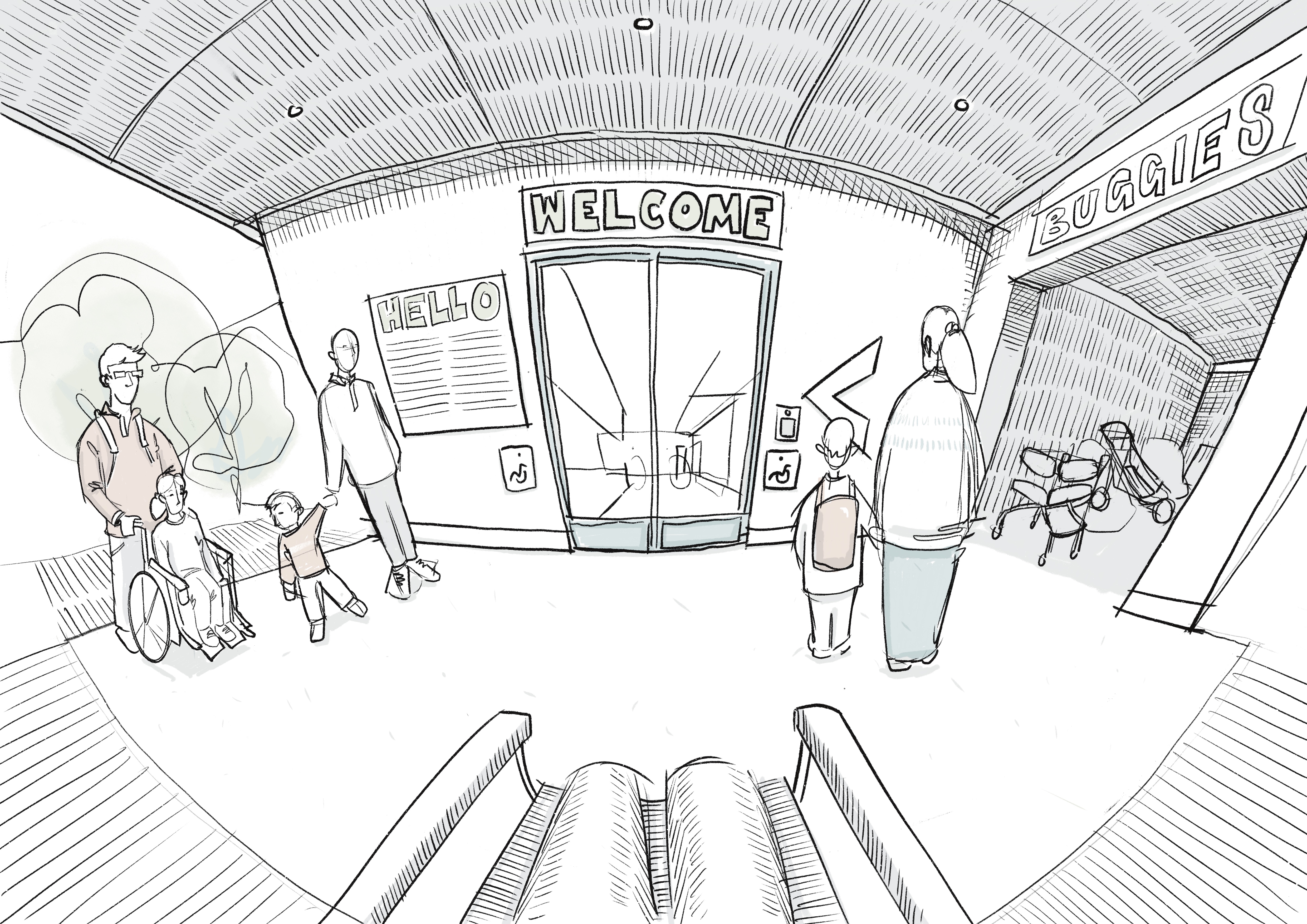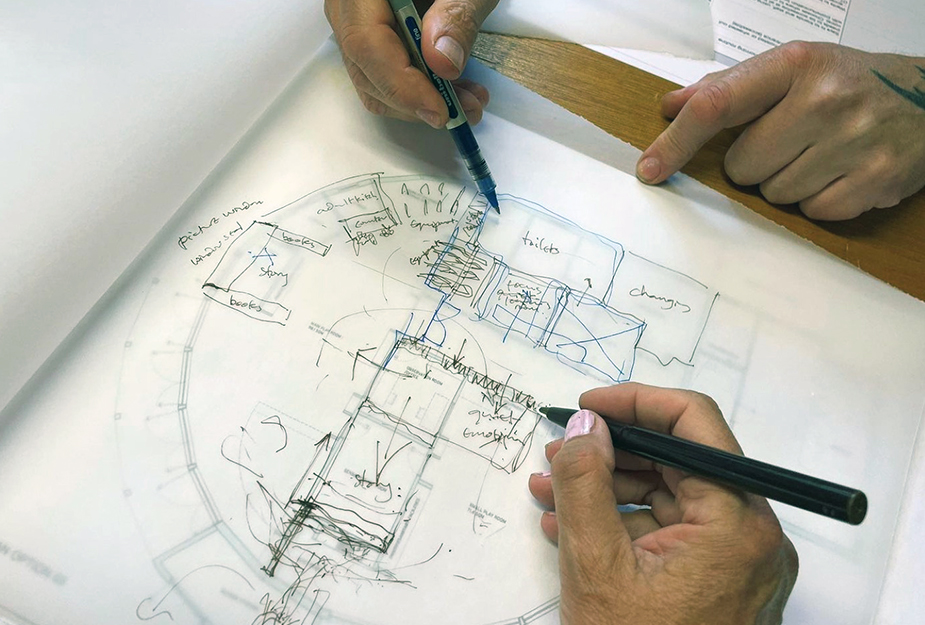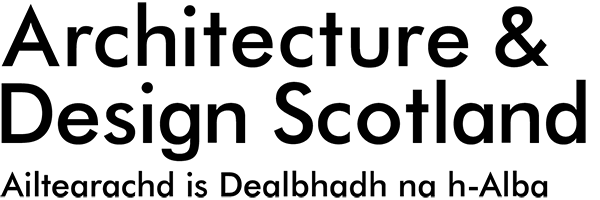Key principles for inclusive and accessible learning environments
Considerations for creating safe and supported spaces to meet the needs of all pupils

Introduction
Inclusive and accessible design seeks to ensure that buildings and spaces are usable by people of all abilities, ages, and backgrounds.
On this page we have outlined seven key principles, and barriers and design opportunities to consider, prior to building or adapting your learning environment to be inclusive and accessible.
To find out more about our work looking at inclusive and accessible design in the learning estate, view this page. To discover spatial ideas for inclusive and accessible design, we have more information on this page.
Please note: Right-click on links to open in a separate window

Seven principles for inclusive and accessible design
Below are seven key considerations when thinking about building or adapting your learning environment to be inclusive and accessible.
These principles are not intended to be used as a definitive list or set of solutions. Instead, they outline important concepts to consider when planning and developing learning environments, with inclusivity and accessibility at the fore.
Click below to expand each key principle
A collaborative approach
Think about those who are involved or affected by the project, including the staff, children, their families and wider community. Consider how they can come together to create a sense of identity, define the purpose and contribute to the project.
Consider the parts of a 'whole place' – the school, grounds, wider community, shared facilities and larger buildings that may sit within the campus. How might these parts interact? Who is involved in each aspect? And how might they support the wider ambition of the project?
When designing and thinking about an inclusive and accessible learning environment, whether for additional support needs, or other specific needs, a ‘whole place’ view of the project can help to incorporate the user’s experience – the approach, arrival at the reception, ancillary spaces (e.g. offices, reception, waiting areas), staff areas and external spaces.
Successful design and whole place thinking both start at an early stage, through consultation and liaison with architects.
See principle 3 for more information about how to 'Build a brief around the needs of the community'.
Set out from the start what you want to achieve
‘Inclusive design’ as an entity is not to be confused with ‘accessible design’. In practice, accessible design will often aim to meet accessible design standards, regulations, and sizes. Truly inclusive design will feature more ambitious, personalised, or aspirational qualities. As a general rule, inclusive and accessible design seeks to ensure that people feel supported in their environment, whatever their needs.
Inclusive and accessible design will mean different things in different projects. It is important to be clear about what they could mean for your learning environment. What would an inclusive outcome look like? And how would it work?
A significant factor in creating truly inclusive spaces is the need for accessible building design, and safe, inclusive environments. The building design needs to be empowering and responsive to the needs of children and young people, and should ensure:
- it is inherently safe, minimising the need for constant support and ongoing risk assessments
- everyone can access what they need, when they need it, as independently as possible, empowering them to reach their full potential
- a wide range of sensory needs are considered, including elements like lighting, materials, aesthetics, and the provision of breakout and safe spaces
- inbuilt flexibility to allow for adaptations in response to evolving IT requirements, dynamic risk assessments, and ever-changing user needs
The potential for positive change depends on finding the best solutions to specific issues. To do this, capturing the feedback of all stakeholders is a vital part of an inclusive process. The approach to seeking, recording and using feedback can create and enrich inclusive environments in which ideas and views can be shared and tested in a productive way.
See principle 3 for more information about how to 'Build a brief around the needs of the community'.
Good consultation is key and is, by its nature, inclusive.
Consultation is an essential part of the design process. It should be started at an early stage to help shape the brief, then continued throughout the project to help identify important issues or needs. This ongoing process allows ideas, designs or proposals that are being developed to be shared and receive feedback.
Shaping the brief
Think about all the stakeholders involved. Identify the best way to work together to shape the brief, requirements, and ideas from the beginning of the project. Think about getting views from as many different groups as possible, particularly children and young people, their parents and other stakeholders.
Interrogate the spaces you currently have. Think about what’s good, which parts work well, what could be changed to make your current space even better. Equally, it helps to understand what’s not working in your space. What’s stopping it from doing what it needs to do?
Capture and share knowledge from the staff and users. They have an in-depth understanding of the space, and can provide valuable information to aide the work of those designing your space.
Remember that briefs can be qualitative. Without specialist knowledge or support, it can be challenging to quantitively describe your needs using sizes of rooms, floor areas, heights and widths. A good brief should also contain a lot of qualitative information about the needs of its users. This vision will be interpreted by the design team.
Set out overarching project aims and non-negotiables. These can be assessed during the process and provide a useful benchmark to check how well the design addresses the needs of users. See how we use a ‘Design Statement’ as an early briefing tool on health projects with NHS Boards here.
Some principles for good consultation
- There is no set way to organise or hold consultation sessions, but it helps to have a straightforward purpose, an easy-to-follow process, and a clear ask when it comes to the feedback you need.
- Plan ahead! Gathering the correct groups and people together will require forward planning, so give everyone plenty of time to get together.
- Your consultation may be a single event, or a series of events held throughout your project. It depends on what works best for your project and its stakeholders.
- When designing for inclusivity, consider any extra provisions you might need to make, based on the types of changes you are planning, and the type of support needs you may have to address. Do you need specialist support from others? Or advice on particular aspects of the project?
- Ensure plenty of time for communicating and gathering feedback (and consider what the most appropriate method of feedback would be).
Establish what success looks like and how design can support your aims.
Every community and place is unique, so while it can be helpful to research similar projects, remember that what works in one context might not work in another.
Consider these ideas to help you shape your own vision of success
Other projects can offer inspiration and ideas. Researching and seeing good examples of projects – or even elements of them, such as materials used, type of access, sizes or layouts of playrooms – is an important part of developing your own brief. These examples might challenge your thinking or even raise your aspirations.
Visiting other facilities or centres can provide invaluable insight and exchanges. Visiting other schools or nurseries can offer valuable insight into what makes a strong learning environment, as well as how design and teaching practices interact. The way a space shapes – and is shaped by – teaching attitudes, successes and challenges and is important to observe.
Observing things as they happen in real time can help you understand potential barriers or stimuli. Observations can clarify what an inclusive environment might look like, and reveal potential barriers. Witnessing what stimulates and engages children with additional support needs or disabilities can help to build a picture of how a space can be more inclusive for everyone.
Seek ways to visualise your project. Images, photographs, sketches, notes and references can become important parts of your brief. Keep an open mind, and think about how your space needs to work. Gathering all your ideas together can help streamline your vision.
Remember that play is simple. Children want to play and learn together. Understanding disabilities and support needs of young children can seem complex – but remember that play is simple, with joy and ease at its core.
Think how spaces may need to change over time
Things change over time – technologies, treatments, support needs, and the children who will use the facilities – so it’s vital to allow for flexibility and futureproofing.
This starts with the brief. A clear, understandable brief is essential, but that doesn’t mean it can’t change or develop. Briefs should be updated, interrogated, and challenged as much as they are followed. As it starts to take shape, make sure it can be easily updated or added to in the future.
Once a building is operational, the space may need to adapt to the different needs of the children who use it. It’s important to maintain open communication between users and building managers, as decisions made at a management level - without context or understanding of how the spaces are intended to be used - can have significant impacts on those who use them.
Exploring options for change at different scales
Even the smallest changes in your facility have potential to make your space more welcoming or inclusive, either through spatial changes or governance. There is often huge untapped potential in what already exists, it’s just a matter of unlocking the parts which can be made more inclusive.
Designers can help you to evaluate and figure out what could work best, by providing advice, options appraisals, or simply helping to structure and clarify your thinking. Testing things spatially, on paper and with workshops can help figure it out.
For example, simply rearranging furniture or room layouts can have a profound impact on a space and its users. Testing and exploring options this way can also help you understand how to be more inclusive. For ideas and resources about how to test and explore options, click here.
Exploring different activities or areas of your facility could help reveal simple ways of making it more inclusive, like encouraging independence in small everyday routines such as hanging up a jacket or preparing a snack.
Policy context
Inclusive and accessible schools sit within a wider policy context, shaped by a focus on equality and inclusion, children’s rights, sustainability, and national planning.
From the design of the physical environment and the use of natural materials, through to the Scottish Government’s goal of eradicating child poverty and delivering high-quality and sustainable public services, there are many broader factors to consider. Here are a few:
- Scottish Learning Estate have guiding principles which set out a strategic approach for managing the learning estate. Click here for more information.
- Scottish Government key priorities, including eradicating child poverty (which disproportionately impacts children when they have Additional Support Needs or disabilities) can be found here.
- Additional Support for Learning policies can be found here.
- The Inclusion, Wellbeing and Equalities Professional Learning Framework supports anyone working with children and young people in an educational context. More information can be found here.
- United Nations Rights of a Child Act 2024 and its impact for Scotland can be found here, and details of the legal duty to incorporate children’s views and needs can be found here.
- Learning for sustainability action plan which aims for every 3–18 place of education to become a sustainable learning setting by 2030. Find out more here.
- Care Inspectorate have created a document call Spaces to Grow and Thrive. Find out more here.
- Enquire is the Scottish advice service for additional support for learning. They provide easy to understand advice and information about additional support for learning legislation and guidance for families and professionals.
Barriers and opportunities to creating inclusive and accessible environments
A workshop with Education Scotland and their National Complex Needs Network helped to explore barriers and design opportunities for inclusive and accessible learning spaces.
A summary document below shares ideas of how to create an ideal educational setting which supports a variety of physical and sensory needs.
The design of school environments plays a crucial role in accommodating the diverse needs of pupils, particularly those with complex needs. In October 2024, we facilitated a workshop with Education Scotland and their National Complex Needs Network to explore barriers and design opportunities in learning spaces based on their experiences.
The downloadable document below summarises our discussions and outlines some key considerations and barriers that were discussed during the workshop. In the workshop we considered how we can create an ideal educational setting that supports both physical and sensory requirements.
The session provided an opportunity to accumulate all the expertise of this network, to interrogate the spaces they work and teach in, and how the design of them aid or hinder the learning and teaching process.
Additional information
This resource outlines principles to consider, rather than guidance. When we refer to inclusive and accessible approaches this is very much in reference to our learning from the Craighalbert project and an additional supported needs (ASN) basis. There are many other factors and users to consider and collaborate with in creating fully inclusive spaces.
We hope to further expand these resources for the learning estate, and we are eager to develop further projects and case studies to deliver this form of support.
Further resources
This webpage forms part of a suite of resources. Additional webpages can be accessed through these links, which explore Designing for Inclusive and Accessible Learning Environments and Spatial Ideas for inclusive and Accessible Learning Environments.
To find out more about our work on designing for the Learning Estate, click here.
